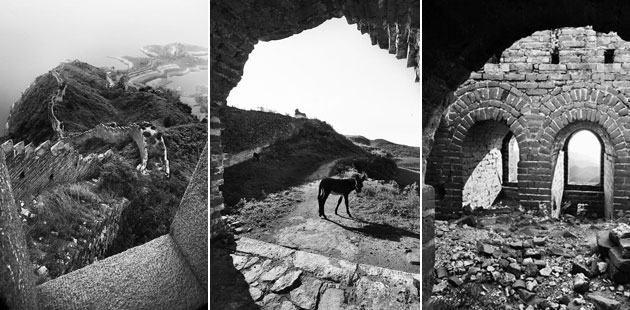Country in City
Updated: 2011-12-19 11:00
By Liu Yujie (China Daily)
|
|||||||||

As China becomes increasingly urbanized, it has to find space for its urban and rural citizens as both groups become increasingly integrated. Experts suggest a possible model may be "re-inventing" a "garden city". Liu Yujie explores the concept.
China's mega-cities are bursting at the seams. The country is now undergoing the quickest and biggest urbanization in the history of mankind. It is estimated that by 2025, China will have 400 million more people living in its cities, raising its urban population to 900 million. Its current population already numbers 1.37 billion.
To cope with changing demographics and psychographics, experts say future urban development requires the rural and city relationship to change from the rural-serving-urban mode to a cooperative brotherhood.
The situation is still immensely fluid, and China's cities are changing constantly, both in size and character. As they say, "it's changing every year, with a transformation every three years".
New satellite towns are mushrooming on the urban fringes while city ring roads are rippling outwards into the countryside at amazing speed. In Beijing alone, traffic congestion has already mired the fourth and fifth ring roads, once considered countryside.
The problems are also cropping up with equal speed.
Satellite maps collected by Professor Joshua Bolchover at the University of Hong Kong bring the problem sharply into focus. They track the changing rural-urban framework in the past 30 years, and suggest that cities are brutally devouring surrounding rural land, and rapidly reducing the amount of arable land.
Where has it all gone? New residential blocks, new industrial zones, new financial centers and the other inevitable signs and signatures of economic growth have sprung up almost overnight.
This is not a sustainable growth pattern, especially when China has the world's largest population to feed.
Concerned urban planners are also starting to note the social and physical effects of the diaspora when displaced rural communities are forced into the cities.
A trend of thought is gradually taking shape, and this is the concept of the "garden city", an amalgamation of country and city that is being mooted by architects and city planners.
Already, some experts have criticized current building policies that demand a certain percentage of land to be put aside for "picturesque" greenery belt. They feel this merely caters to the sensitivities of China's emerging petite bourgeoisie. The land, they say, is completely unproductive, "useless" and ignorant of the crisis of diminishing arable land.
Hua Li, from Tao Architects, is among the many professionals with such a voice. His argument is supported by a long-term study on this subject. He says the answer is to preserve patches of "productive farmland" within urban boundaries.
This will not only bring work and purpose for displaced farmers, but also reduce food miles.
As Hua says, "less transportation means we have fresh agricultural products at lower costs and less carbon emission in the city". Urban farmland can also be showcased for "agricultural tourism" and education.
Hua is not grabbing at ideas in the air. The concept is already practiced at the grassroot level.
Zhang Guichun, a 55-year-old Beijinger, has astonished the local community with his organic "hanging garden" on the roof of his traditional courtyard home north of Tian Tan, or the Temple of Heaven in southern Beijing.
"Even if we don't have enough land in the city, agriculture can go vertical, up to roof and balcony," Zhang notes.
Zhang, a traditional Chinese medicine practitioner, began creating his "hanging garden" five years ago, and now it is home to some 30 kinds of vegetables and fruit, including tomatoes, cucumbers, sweet bell peppers, melons and watermelons - all enough to feed his family.
For Zhang, the rooftop project translates to tangible benefits, such as safe, nutritious vegetables, a cooler home in summer, fewer mosquitoes (thanks to the tomatoes, which are natural insect repellents) and better bonding with neighbors.
"Neighbors enjoy dropping by for a relaxing chat or just to see how well the lovely vegetables and fruit are doing."
People like Zhang are still rare. The greening of roof space with vegetables and fruit takes skill and energy.
"But with more positive media exposure and advanced technology, I believe my experiment has the prospect of becoming common practice in future. By then, our cities will no longer look so gray when seen from the satellites."
The encroaching cities have also raked up psycho-socio problems.
With the loss of their arable land, farmers and rural workers find it hard to adapt to city life, not being equipped with the relevant skills for an urban environment. As a result, many suffer from distress and anxiety that no government aid can compensate.
Last year in Beijing alone, there were 45 villages in Chao-yang district, 20 in Haidian, 30 in Changping and 64 in Da-xing slated for demolition, More than 60,000 rural residents had to be re-housed and compensated.
Li Zhi, a farmer from Chang-ying village in Chaoyang district, is among them. Together with more than 6,000 rural residents from 10 villages, Li moved to one of the new communities in Tongzhou district late last year.
"I lost my land and became rich overnight, but I can't find a job in the city. I feel so empty from day to day," Li says. He now keeps himself occupied selling fruit on the streets. Illegally, without a license.
It could have been worse. A relative of his lost 200,000 yuan ($31,600) - all of his compensation money - on the stock market.
Li says although the government and certain social groups from universities have initiated public courses to address and alleviate their financial and psychological stress, what they really want is to feel economically useful again.
There is also a matter of lifestyle, according to Li, because rural folks find it hard to adapt to city life.
"Moving to the cities, we are told not to grow vegetables, not to raise chickens in the community, not to leave things in the corridors, and so on and so forth because these habits may annoy our neighbors. But it's not that easy to change."
Keeping this in mind, architects at Urbanus designing the Technology Village in Changping district, Beijing, are focusing on ways to engage the rural-turned urban population and help them regain social status, and dignity.
"Above all else, we hope to leave the central green area for productive farmland, so that local farmers will be able to stay on the land and continue to earn their living," says Wang Hui, the chief architect.
For Wang, it was important to remember and be aware that millions of farmers have lost money, livelihood and lifestyle, and they should not be marginalized again socially, as insult upon injury.
"By keeping some space for farmland instead of cramming the landscape with scenic green zones, we give the farmers a buffer, buy them more time to learn and adapt to their new roles as urban dwellers," Wang says.
From another perspective, Liu Jiakun, an architect based in Chengdu, suggests that synergy between similar interest groups may be the answer - for example, a creative zone on the outskirts of cities for both artists and farmers.
Liu's inspiration comes from the success of the Lan Ding (Blue Roof) Art Zone, southwest of Chengdu in Sichuan province.
It started from a cluster of abandoned factories in 2003 which attracted four artists. Now, it houses a community of contemporary artists, of which there are about 100. Many of them are well known.
"People in the creative industry usually lead a SoHo (small office, home office) lifestyle, in favor of large, loft space, flexible working hours, and a free communicative atmosphere," Liu says. "By moving to the suburbs, they get it all, at lower costs."
Although the local farmers initially found it hard to understand the bohemian attitude of the "invaders", they became quickly integrated after several months.
Apart from getting regular income by renting out property to the artists, they also found work as cooks, housekeepers, security guards and gardeners.
"A local farmer told me he used to know nothing about art, but now he can tell visitors who is who and how the artistic works are created," Liu says, chuckling.
He has confidence that in the future, not only artists but also those in related industries of film, animation, advertising, architecture, and industrial design will gather in this artistic village.
The growing community will attract more visitors, making it better known as an educational and art exhibition venue.
This looks like an ideal blueprint - indeed, a blueprint that has worked in many Western countries. In China, the creative industry is a cornerstone of the economy, and is developing 10 times faster than the traditional industries.
But most of all, this blueprint will signal the start of a new approach to the rural-urban relationship in terms of land use and human interaction.
It is this kind of approach that is surfacing and making urban planners sit up, take notice and take action at the recent 2011 Chengdu Biennale and the 2nd EU-China High Level Cultural Forum in Beijing.
In Chengdu, the delegates deliberated the concept of "garden cities" while in Beijing the debate revolved around "inventing cities", or "re-inventing" in this particular context.
Gilbert Hottois, a Belgium philosopher, said at the forum in Beijing that like many scholars he tended to attribute the fault of putting city and country, modern and traditional at opposing, conflicting sides to "modernism", which in its turn stemmed from the Industrial Revolution in the 18th century that gave birth to mass urbanization and an estrangement with the land.
However, with a rapidly increasing global population and worsening pollution, cities have reached the bottleneck of development and can no longer accommodate exploding numbers of people on their own.
Simply put, the next global vision will mean inventing "garden cities" that involve active collaboration between cities and rural areas, so both urbanites and country folks can optimize and enjoy conveniences such as global information, international networking, cutting-edge technology and design, without sacrificing pastoral and cultural heritage.
Wu Zhiqiang, director of the college of architecture and urban planning at Tongji University, also the chief planner of the 2010 Shanghai World Expo, leaves us this vision: "The international garden city conglomerate will be a Yangtze River delta composed of a mega city, several medium cities and rural hinterland nearby, instead of just Shanghai alone."
It is a vision with promise, and worth working towards.











